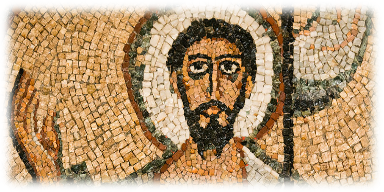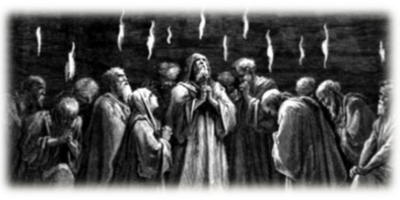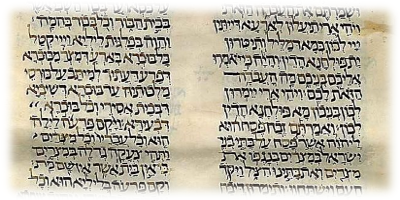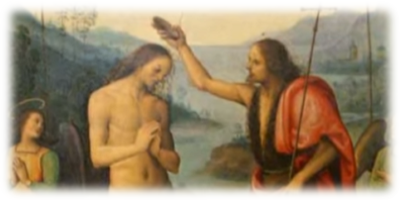10. Jesus was not only descended from the kings of Israel, but also from the priests of Israel.
According to the genealogy of Matthew chapter 1, Jesus was a descendent of King David and therefore, a descendent of the kingly line, but few realize that he was also a descendent of the priestly line as well. There was in the days of Herod, king of Judaea, a certain priest named Zacharias, of the course of Abijah: and he had a wife of the daughters of Aaron, and her name was Elisabeth (Luke 1:5). Elisabeth was the cousin of Mary, Jesus’ mother. While Jesus is descended from the Kingly line through his father, he is also descended from the priestly line through his mother.
9. Jesus was not an only child.
According to Mark 6:3, Jesus had many brothers and sisters; Is not this the carpenter, the son of Mary, and brother of James, and Joses, and Judas, and Simon? and are not his sisters here with us? And they were offended in him.
8. Jesus spoke Hebrew, not Greek.
According to Josephus, a Jewish historian who lived during the time of Jesus, Jews hated all things Greek, including the language. In fact, during the Maccabean revolt, observant Jews killed Jews that learned the Greek language and culture. While it has been assumed in the past that Hebrew ceased to be a spoken language of the Jews long before Jesus, recent archaeological evidence shows that the Hebrew language was still used by the Jews in Israel into the second century AD.
7. The term "son of man" describes Jesus’ messiah-ship, not his humanity.
Many assume that the phrase "son of God" refers to Jesus’ messiahship, but in truth, this phrase is used for all of God’s children (see John 1:12). The phrase "son of man" is frequently found in the Bible and is a generic term for "man" (see Ezekiel 2:1). However, in Daniel 7:13 we find something unique. one like the Son of man came with the clouds of heaven This verse, like much of the book of Daniel, was written in Aramaic, not Hebrew. The Hebrew term for "son of man" is ben adam, but in Aramaic it is bar enosh. This is the only verse in all of the Old Testament that uses the phrase bar enosh. When Jesus referred to himself as the "son of man," he did not use the Hebrew ben adam, but the Aramaic bar enosh, identifying himself as the "son of man" that will come with the clouds of heaven.
6. Jesus wore a four-cornered garment, not a Roman toga.
Almost without fail, every image of Jesus has him dressed in a roman toga, which Jews did not wear. All male Jews wore a four-cornered garment with a fringe on each corner in obedience to God’s command in Numbers 15:38. We know that Jesus wore this garment based on what we read in Matthew 9:20. And, behold, a woman, which was diseased with an issue of blood twelve years, came behind him, and touched the kraspedon (Grk) / tsiytsiyt (Heb) (fringe) of his garment.
5. More than three wise men came to see Jesus.
Every nativity scene of Jesus’ birth has three wise men, but nowhere in the Bible does it identify how many wise men came to see Jesus. Many assume three because there were three gifts (gold, frankincense and myrrh). Matthew 2:1 only tells us that "wise men" came from the east. Because of predators and raiders, people did not travel in small groups . It was more likely that a very large contingent of wise men, and soldiers, traveled from the east to see Jesus. In addition, these wise men were not Persians, as often assumed, but were, in-fact, Jews. In the sixth century B.C, the Israelites were removed from the land of Israel and taken to Babylon in the "east." Years later, they were allowed to return to Israel. Only a small group did so, but the majority remained in the "east," including "wise men."
4. Jesus did not sit in a chair or eat bread as depicted in da Vinci's Last Supper.
The Last Supper was a Passover Celebration, which did not allow "puffy" bread, only "unleavened" flat bread. Additionally, first century Jews in Israel, sat on pillows on the floor when eating and did not own "chairs."
3. Jesus’ last words on the cross were not Eli Eli Lama Sabach’tani.
In Matthew 27:46, the phrase Eli Eli Lama Sabach’tani is the last recorded words of Jesus, but his last words must have been sh’ma Yisra’el YHWH eloheynu, YHWH ehhad (Hear, O, Israel, YHWH is our God, YHWH is One (Deuteronomy 6:4). According to Jewish tradition, these words should be the final words of every Jew before death and we can be sure that these were the last words of Jesus, a devout Jew facing death.
2. Jesus was a stone mason, not a carpenter.
In Mark 6:3 Jesus is identified, in most translations, as a "carpenter." However, the Greek word tekton more generically means a "craftsman." This word can be used for one who works with wood (carpenter), metals (smith) or stone (mason). Wood was scarce in Israel at this time, but stone was very plentiful. More than likely, Jesus was a mason, not a carpenter.
1. Jesus’ real name is not Jesus.
Jesus’ original name was Yehoshua (Joshua). When this name was transliterated into Aramaic it became Yeshua (see Ezra 2:2, which is written in Aramaic). Then, when transliterated into Greek it became Iesou(s) (see the name "Joshua" in Exodus 17:9 in the Septuagint, the Greek translation of the Old Testament). When this was transliterated into Latin it became "Jesus."

Like what you’re discovering? Continue the journey from Bible reader to translator.
|







